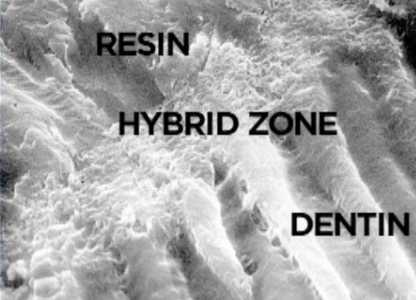 Failure of adhesive dentistry due to bond degradation is a primary concern for all restorative dentists. Understanding the reasons and processes that cause and exacerbate this degradation can lead a clinician to better decisions regarding materials and techniques.
Failure of adhesive dentistry due to bond degradation is a primary concern for all restorative dentists. Understanding the reasons and processes that cause and exacerbate this degradation can lead a clinician to better decisions regarding materials and techniques.
Unlike bonding to enamel, which is amazingly durable and insensitive, dentin-bonding is a technique-sensitive issue. It requires you to demineralize the inter-tubule dentin with a solvent to create the bond. The challenge in dentin-bonding is realizing what the two causes of degradation are so you can prevent it from happening to one of your patients.
Hydrolosis of sub-optimally polymerized hydropholic acid. Also known as conversion, this is the primary cause of degradation. If you don't use adequate light activation while bonding, your resin will not polymerize completely.
Degradation of water-rich, resin-sparse collagen matrices by matrix metalloprotinases and cysteine cathespins. The hybrid zone is inconsistent throughout the tooth. This leads to certain zones of the tooth with inadequate resin casing MMPs and cysteine cathespins to weaken the bond.